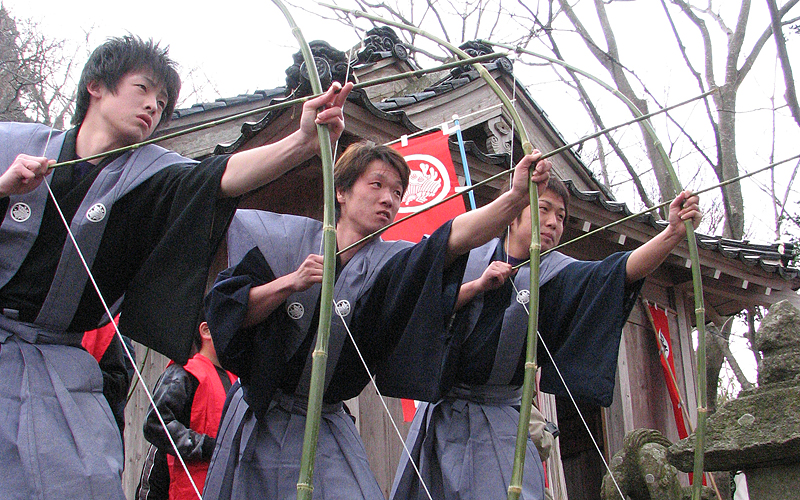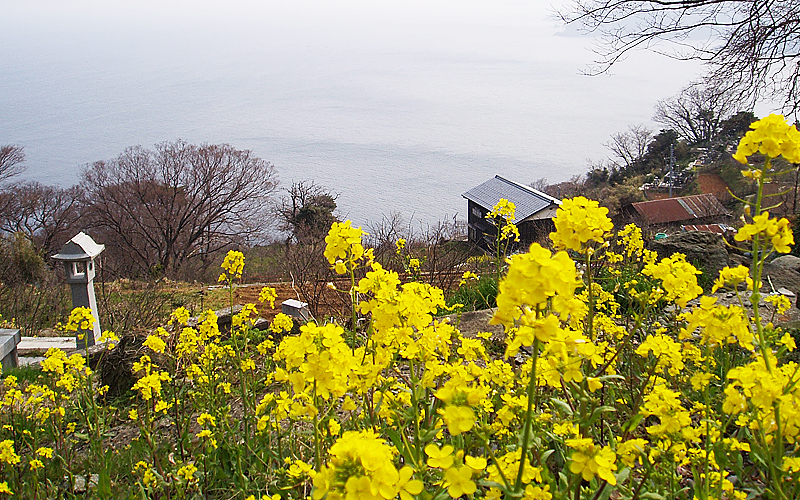Misaki district and Momote no Gishiki (ritual of 101 arrows)
“The Tale of the Heike” (Heike: the Heike/Taira family) tells us the sad evening of the Heike who reached the height of their prosperity, describing that Heike court nobles and worriers lost in the Battle of Dan-no-ura or got captured alive by Genji worriers. Villages with a legend of fleeing Heike worriers can be found in all corners of Japan. Such legends tell us that Heike worriers, who ended their own lives according to the Tale of the Heike, actually managed to escape and led a secretive life in remote intermountain areas or lonely islands. Kasumi Ward, Kami Town also has five areas with a legend of fleeing Heike worriers. Among them, the Misaki district in Amarube, Kasumi Ward is said to be a place where fleeing Heike worriers lived. After they lost in the Battle of Dan-no-ura, they boarded the same ship to escape for Iki/Tsushima, but drifted across the Japan Sea to a place near Kasumi and escaped along the beach to Misaki, settling down there. Misaki is a place where turnips called “Heikekabura,” which are said to grow only in Misaki, grow naturally. In spring, Heikekabura bear yellow flowers similar to rape blossoms. Even today, some people eat pickles of Heikekabura. “Momote no Gishiki,” one of traditional rituals associated with the Heike, is held every year on January 28 (around 3:30pm). In this ritual at Heinai Shrine, three boys dressed up as worriers shoot 101 arrows at a target as a Genji worrier tied to a sacred tree in the shrine, using arrows made of bamboo produced in this area. It is said that this ritual originated from a shrine ritual of archery called “Kachiyumi.” It is a traditional event that has been held from old times so that the Heike can revenge themselves and arouse the morale in prospect of the restoration of the Heike.





